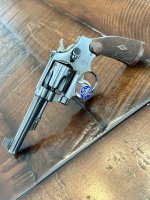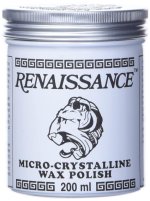- Joined
- Oct 31, 2022
- Messages
- 471
- Reaction score
- 3,729
I've done a fair bit of research on this on the forum but I'd like to ask the membership some specific questions about how they preserve the bluing on their nicer pre-war guns.
First question: Would I be correct in thinking that anything a revolver touches has the potential to rust it? What I'm thinking here is when I see a revolver that sat in a pistol rug for years, have spots of rust on high points. I've been wrapping all of my nice blued revolvers in VCI paper for long term storage because I don't have a way to suspend them like on a peg through the barrel. Does anyone else do this? I also have read that some members have a preference for silicone sock type cases.
For a final "finishing" product specifically to protect the surface of the gun, it seems that members are evenly split between grease like RIG and Ren-wax. I assume that this is a one or the other proposition?
Finally does anyone still just use an old school silicon cloth anymore? I have a couple of revolvers that I've just wiped down with a Hoppes silicon cloth and then wrapped in VCI paper and put up.
I know also that ultimately the key to mitigating corrosion is frequent inspection and I absolutely do that.
I appreciate everyone's input. I now have a fairly high investment in my collection and want to take care of it.
First question: Would I be correct in thinking that anything a revolver touches has the potential to rust it? What I'm thinking here is when I see a revolver that sat in a pistol rug for years, have spots of rust on high points. I've been wrapping all of my nice blued revolvers in VCI paper for long term storage because I don't have a way to suspend them like on a peg through the barrel. Does anyone else do this? I also have read that some members have a preference for silicone sock type cases.
For a final "finishing" product specifically to protect the surface of the gun, it seems that members are evenly split between grease like RIG and Ren-wax. I assume that this is a one or the other proposition?
Finally does anyone still just use an old school silicon cloth anymore? I have a couple of revolvers that I've just wiped down with a Hoppes silicon cloth and then wrapped in VCI paper and put up.
I know also that ultimately the key to mitigating corrosion is frequent inspection and I absolutely do that.
I appreciate everyone's input. I now have a fairly high investment in my collection and want to take care of it.


